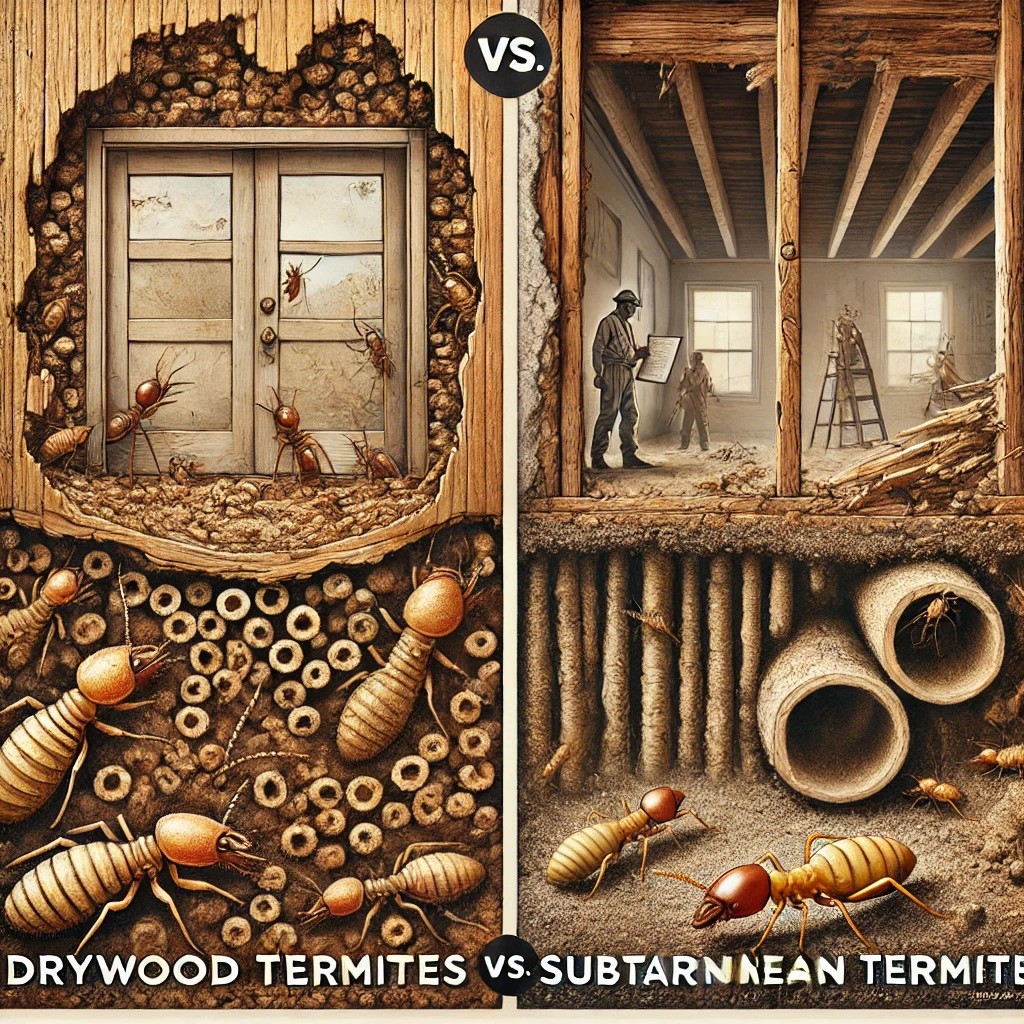
When it comes to protecting your home from termites, it’s crucial to understand the differences between the various types that could be causing problems. Two of the most common and destructive species are drywood termites and subterranean termites. Here’s a detailed comparison of these two types of termites, their habits, and how they differently impact wooden structures.
Drywood Termites
Characteristics and Habits
Drywood termites, as their name suggests, live and feed on dry wood. They do not require contact with the soil and typically infest above-ground wood structures such as window frames, doors, and furniture.
- Nests: They form colonies within the wood they infest. These nests are generally small compared to subterranean termites.
- Reproduction: Swarms of winged termites occur under high humidity conditions. After finding a suitable spot, royal pairs mate and establish a new colony.
- Diet: They consume cellulose directly from wood, creating galleries and tunnels inside it.
Impact on Structures
Drywood termites can cause significant damage to wooden structures. Although the damage might not be visible externally, the interior of the wood can be entirely hollowed out, compromising the structural integrity.
- Signs of Infestation: Common signs include small, pellet-like droppings expelled from the galleries, which may accumulate around the infested area.
- Damage: Can weaken wooden structures, causing them to break under pressure.
Subterranean Termites
Characteristics and Habits
Subterranean termites are known for forming very large and destructive colonies. They live in the soil and need constant contact with soil moisture to survive.
- Nests: Their colonies are located in the ground and can extend up to 300 feet in search of food. They build mud tubes to travel between the nest and food sources.
- Reproduction: They also produce swarms of winged termites that disperse to start new colonies.
- Diet: They feed on wood and other cellulose-containing materials such as cardboard and paper, accessing them from the ground.
Impact on Structures
Subterranean termites can cause devastating damage due to their large colony size and persistent search for food.
- Signs of Infestation: The presence of mud tubes on walls, beams, or foundations is a clear sign. These tubes protect termites as they travel between their nest and the wood they consume.
- Damage: They can compromise a building’s structural integrity by consuming wood from the inside out, leaving only a thin exterior layer intact.
Which is the Bigger Threat?
Both types of termites pose significant threats, but in terms of potential damage and scope, subterranean termites are often more dangerous. This is due to their ability to form larger colonies and remain hidden while causing extensive damage to a structure.
However, the real threat depends on the geographical location and specific conditions of the property. Regular inspections and preventive measures are essential to protect your home from any type of termite.
Understanding the differences between drywood termites and subterranean termites is essential for making informed decisions about pest control in your home. If you suspect an infestation, it’s advisable to contact professional pest control services like Eco Fauna Pest Control for proper assessment and treatment.
Protecting your home from termites not only preserves its structural integrity but also ensures a safe and healthy environment for your family. Stay informed and proactive in the prevention and control of these destructive pests.
